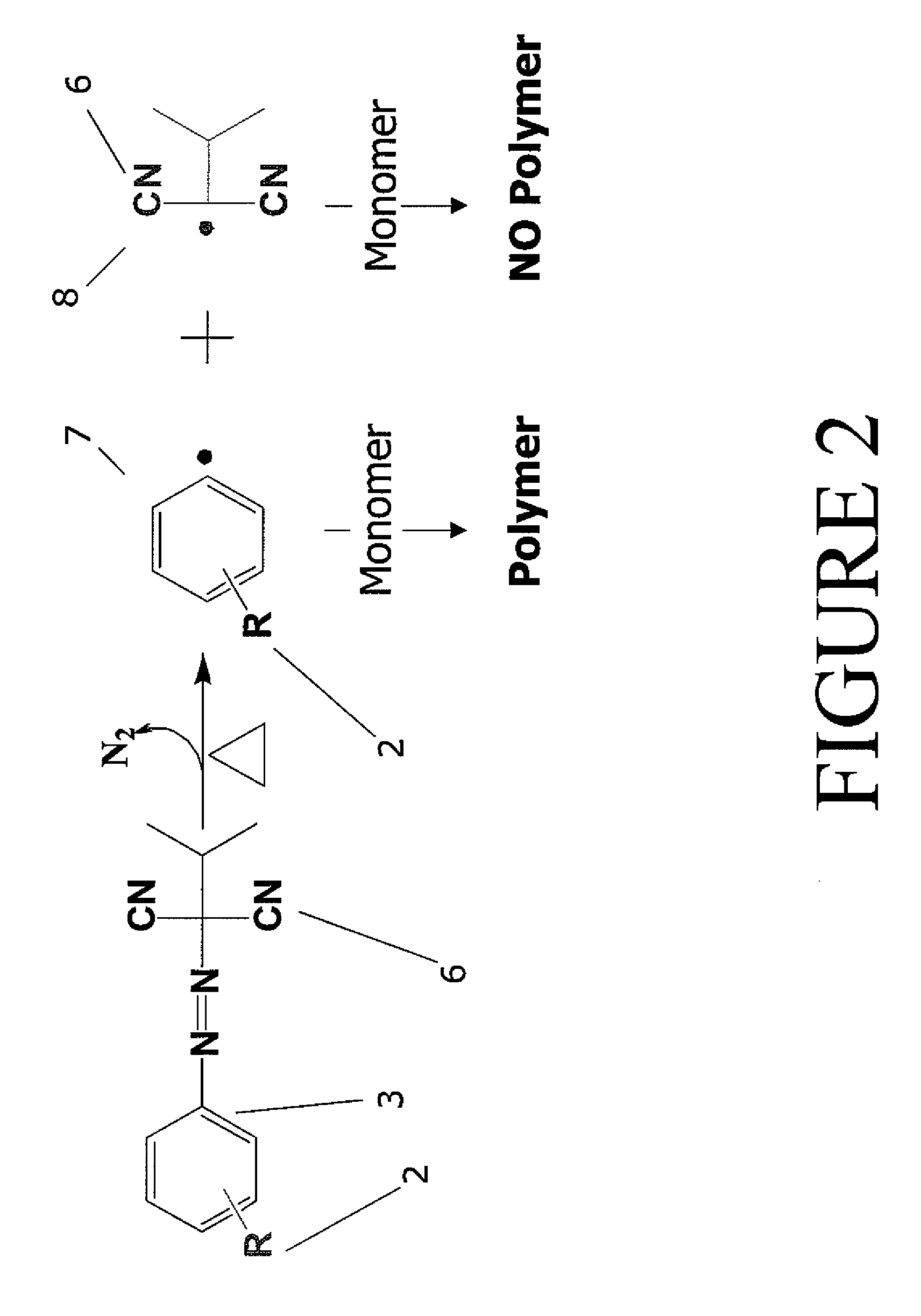Multifunctional azo initiators for free radical polymerizations: uses thereof
a multifunctional, free radical polymerization technology, applied in chemical/physical/physical-chemical processes, chemical apparatus and processes, chemical/physical processes, etc., can solve the problems of monomer compatibility, heavy metal contamination in the final product, and inability to synthesise the compound
- Summary
- Abstract
- Description
- Claims
- Application Information
AI Technical Summary
Benefits of technology
Problems solved by technology
Method used
Image
Examples
examples
1) Initiator Synthesis
[0073]In at least one embodiment, the initiator unit was synthesized from various components. Initiators having 2, 3, 4, 5, 6, and any number of initiator units are contemplated by this invention. The number of initiator units on each initiator depends on the multifunctional core that the initiator is formed with.
[0074]In one embodiment, the multifunctional azo initiator was formed using a convergent synthetic route, in which the initiator unit was synthesized, and then coupled to a multifunctional core. 3-(Azoisopropyl-malonitrile)benzoic acid was formed in yields greater than 95% through the diazotization of an aryl amine. 3-Aminobenzoic acid was treated with sodium nitrite to form a diazonium ion, which was then reacted with isopropyl malonitrile in the presence of sodium acetate to form the unsymmetrical azo initiator. Isopropylmalonitrile was synthesized via literature methods. (Dunham, J. C.; Richardson, A. D.; Sammelson, R. E., Synthesis 2006, (4), 680-6...
PUM
| Property | Measurement | Unit |
|---|---|---|
| temperature | aaaaa | aaaaa |
| temperature | aaaaa | aaaaa |
| temperature | aaaaa | aaaaa |
Abstract
Description
Claims
Application Information
 Login to View More
Login to View More - R&D
- Intellectual Property
- Life Sciences
- Materials
- Tech Scout
- Unparalleled Data Quality
- Higher Quality Content
- 60% Fewer Hallucinations
Browse by: Latest US Patents, China's latest patents, Technical Efficacy Thesaurus, Application Domain, Technology Topic, Popular Technical Reports.
© 2025 PatSnap. All rights reserved.Legal|Privacy policy|Modern Slavery Act Transparency Statement|Sitemap|About US| Contact US: help@patsnap.com



